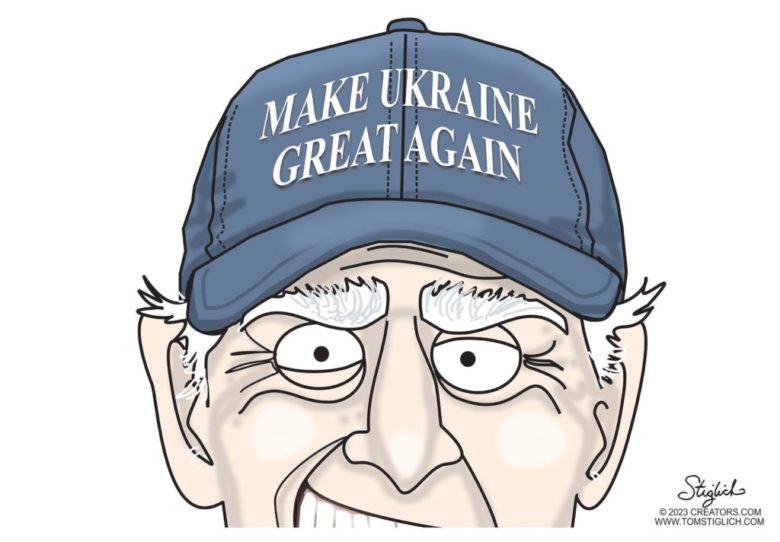Ukraine’s Counteroffensive Hasn’t Gone As Well As Expected. Here’s Why

- Ukraine’s counteroffensive has slowed against deeply-entrenched Russian defenses and may not reach a key objective, but it’s too early to determine whether it has proven a failure, experts told the Daily Caller News Foundation.
- Ukrainian troops have changed tactics and refocused on managing an attrition war over the long term, according to media reports.
- “This is going to last for years, in one way or the other. And we should not base our enthusiasm or our willingness to provide Ukraine weapons and support based off whether or not the counteroffensive is a success or failure,” Luke Coffey, a senior fellow at the Hudson Institute, told the DCNF.
Ukraine’s anticipated counteroffensive has slowed to a grinding pace and dismayed commentators, who wonder whether the Ukrainians were properly positioned in the first place to achieve their aims.
Prior to the counteroffensive, which began in June, the West invested billions in training and equipping brigades of fresh Ukrainian troops to achieve key objectives, including severing Russia’s ground-based connected to the occupied Crimean peninsula. However, Kyiv’s military planners changed tactics after frontal assaults with Western weapons ended badly, while Russia’s overwhelming edge in troops and artillery, protected by miles of dug-in fortifications and minefields, hobbled the counteroffensive.
A large portion of Ukraine’s troops on the front lines are inexperienced, experts told the DCNF, while Russian artillery chewed up Ukrainian companies. Furthermore, Ukraine is attempting to perform operations under conditions most Western armies would deem unacceptable by attempting offensive armor and infantry movements without air superiority.
“I don’t think it’s the case that the offensive isn’t meeting the expectations of American and Ukrainian military planners. I don’t think it’s meeting the expectations of American and Ukrainian commentators,” Luke Coffey, a senior fellow at the Hudson Institute, told the DCNF.
In March, Coffey predicted the counteroffensive would see slow, at times uneven progress and doesn’t believe that expectations have not been met.
However, Pentagon officials, speaking anonymously to discuss sensitive issues, have expressed frustration with the pace of Ukraine’s assault and the military leadership’s spurning of U.S. strategic and tactical advice, The Wall Street Journal reported. As early as June, Western officials claimed the counteroffensive was “not meeting expectations,” CNN reported.
U.S. intelligence assessed Ukraine would fail to reach a key goal: the southeastern city of Melitopol, a conquest that would effectively break off the land bridge between Russia and occupied Crimea, The Washington Post reported on Aug. 17. Two major highways and a railroad line run through Melitopol, allowing Russia to transport troops and equipment between the peninsula and other Russian-occupied territories in Ukraine.
Reasons for the stunted progress are “fundamental,” crippling Ukraine’s effort from the start, retired Lt. Col. Daniel Davis, a senior fellow at Defense Priorities, explained to the DCNF. The training Western allies put Ukrainians through on a compressed timetable was just enough to “familiarize” troops with the equipment, he said.
“Then you have the fact that of the most important gear, they simply didn’t have. They didn’t have air power. They didn’t have enough air defense in the tactical area. They didn’t have enough artillery to overwhelm the Russians. And probably the biggest one is that they didn’t have anywhere near enough mine-clearing engineering assets,” Davis said.
Ukrainian military leadership delayed initiating the counteroffensive for as long as they could while waiting for Western equipment to arrive, according to The Economist. The extra time gave Russian troops time to construct hundreds of miles of trenches and lay vast minefields.
Yet, western aid has still not arrived at the pace and quantity pledged, while allies stall and argue over supplying newer and more sophisticated equipment, according to The Economist. Ukraine has received just 60 German-made Leopard tanks, despite promises to send hundreds, a source inside Ukraine’s general staff told the outlet.
“We simply don’t have the resources to do the frontal attacks that the West is imploring us to do,” the source said.
In June, elite western-trained brigades attempted to pierce Russian defensive lines and sustained what Ukrainian military planners considered unacceptable losses of men and equipment, the WSJ reported. After the disastrous first start, Ukraine changed its strategy and tactics.
“No Western Army would have attacked this kind of defense with anything less than a three-to-one advantage because you have to overwhelm the central point of penetration with overwhelming combat power so you swamp the defenses. And at most they might have had parity,” said Davis.
“We no…
Read More: Ukraine’s Counteroffensive Hasn’t Gone As Well As Expected. Here’s Why

